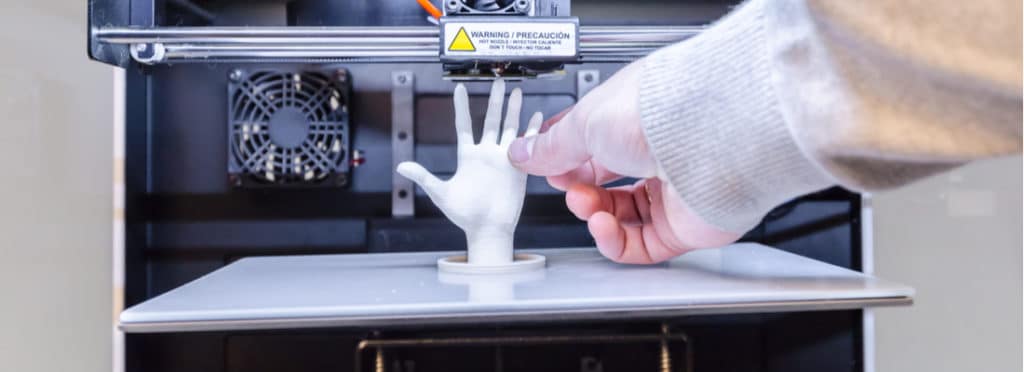Prototyping is a process that’s often assumed to be too time-consuming and costly for smaller agencies. Fortunately, there are ways that you can take advantage of this vital step without costing your agency more than it’s already paying for product or service testing. By using the right prototyping techniques, you can rival even your largest competitors when it comes to product design and delivery.
These tips for improving the idea prototyping process include the use of some newer (but easily accessible) technologies. We’ll also show you how to get the most from each technique.
Idea prototyping is the process of testing out a product before production begins. It can be used to trial a wide array of products and even services, including physical and digital items and mobile applications. Additionally, it can be used to benefit many types of businesses, such as digital design agencies, app designers, product developers, and more.
Unfortunately, many agencies overlook the need for idea prototyping. This is especially true of smaller companies that worry they may not be able to afford the process. However, prototyping offers a lot of key benefits. For example, it:
- Enables you to examine your new product or service more closely.
- Can help you to convince shareholders and clients to support the project.
- Enables you to work out all the kinks more effectively, before the final launch.
Best of all, idea prototyping can save you money and time in the long run. This is critical for businesses and agencies of any size, but especially those that are on the smaller side.
Since much of the standard prototyping process tends to favor larger agencies, it’s important to fine-tune your approach to fit your small agency’s needs. Let’s look at three ways you can do just that.
Create 3D Models of New Products
3D printing is a tool that enables you to make small-scale models of just about anything. This includes products that you hope to sell or showcase to your clients.
If you require funding for your idea, these 3D models can also be more convincing than sketches and slideshows. Plus, for smaller agencies in particular, 3D models will save you the cost of putting together the actual product as a prototype.
To get the most from 3D modeling, we recommend you:
- Prepare (and print) models with various dimensions. This will enable you to compare your product models directly, and it will also reduce the time spent on corrections and changes.
- Anticipate setbacks. Your 3D-printed product model may not come out as you’d hoped, and that’s fine. You’ll want to anticipate such roadblocks, and work on ways to offset them (such as by having various design ideas prepared in advance).
You’ll also want to consider the materials you use, as they can affect the 3D model’s final appearance. There are many types to choose from, and you may find that one material works for one project but not another, so this is a decision best made on a case-by-case basis.
Use an Application Programming Interface (API) to Test Services
An API is a set of communication protocols and tools that make up a piece of software. Its use can be beneficial when you’re testing services or mobile applications, as APIs enable you to see the more obvious flaws of your initial idea.
APIs are also easy to manipulate, so you can test various aspects of an idea without too much trouble. Perhaps their greatest benefit, however, is in the saved costs. While you may have to pay a developer to build your API, the price should be significantly less than it would require to build an entire application or program.
Here are some tips we recommend for getting the most out of your API:
- Work with an experienced developer. To improve the process, you’ll want to work with an experienced developer who can manipulate and change your API to suit the needs of your testing process.
- Open it to the public. Do you want better feedback on your ideas? You can make your API available to your entire audience, or to a select few for beta testing. This will provide you with a fresh perspective, and help you to improve the service or application further.
An API isn’t just useful when developing mobile applications, either. It can also be created and then sold as a product on your website, or even as a service.
Incorporate Augmented Reality (AR) and Virtual Reality (VR)
AR and VR are also becoming more widespread by the day, so you may have easier access to them than to a 3D printer. In order to use these technologies to your best advantage, we recommend that you understand the pros and cons of each, and choose accordingly. For example, VR will require headsets but offers a more complete experience, while AR is simpler but can be implemented on almost any website or application.
It’s often best to test most digital and physical products using AR, as there is no need for headsets or other such equipment. However, if a more immersive experience is required (if the product is a vehicle, for example), VR can be far more effective.
Idea prototyping can often seem a little overwhelming, but it’s a process that’s essential to business growth. Fortunately, there are ways that even small agencies can improve their prototyping strategies, in order to ensure a competitive edge.
Do you have questions about idea prototyping as a small agency, or how to get started with the technologies we’ve introduced? Let us know in the comments section below!
